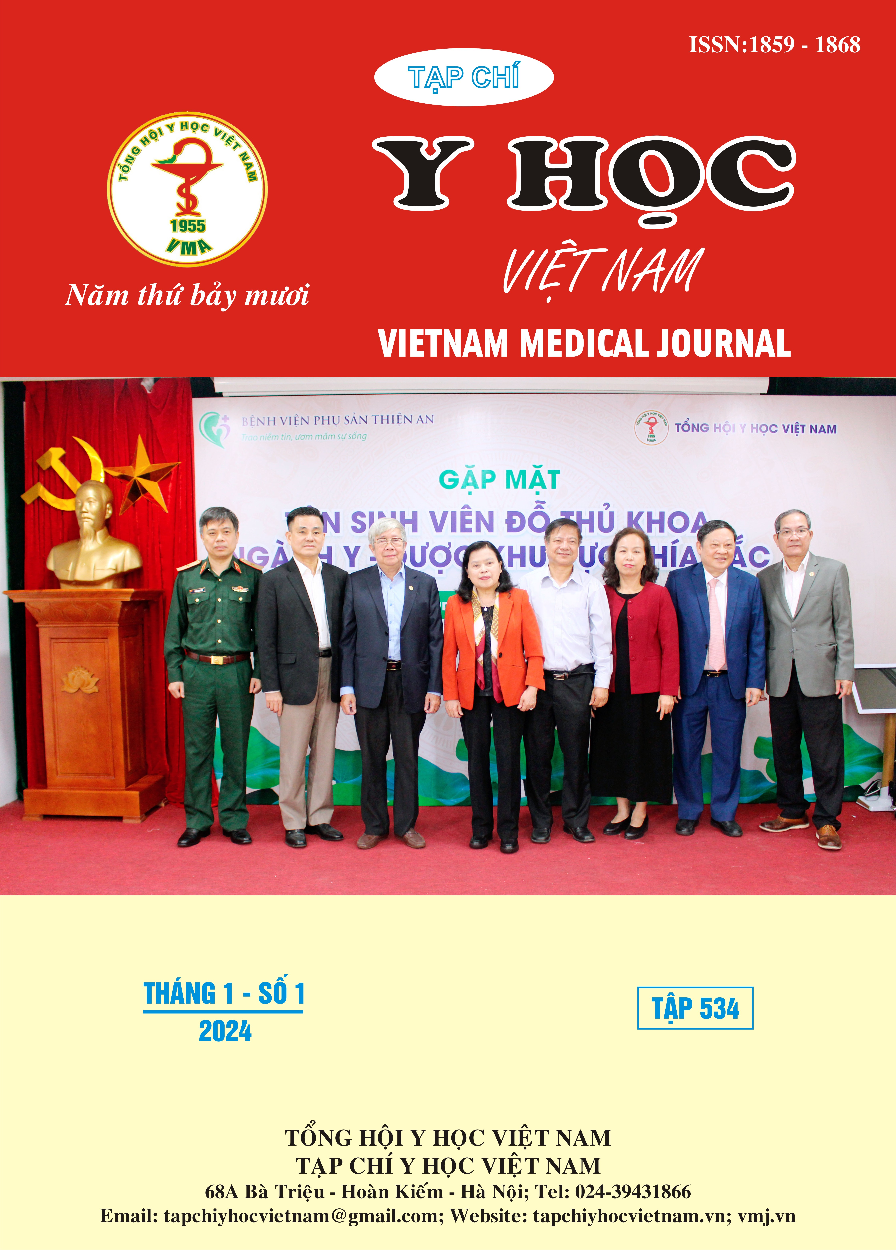TO EVALUATE RESULTS OF RHINOPLASTY APPROACH USING TOTAL AUTOLOGOUS COSTAL CARTILAGE AT CHO RAY HOSPITAL
Main Article Content
Abstract
Background: Evaluating the effectiveness of rhinoplasty using total autologous costal cartilage. Methods: The study describes a series of cases of 42 patients who underwent rhinoplasty surgery with autologous rib cartilage at Cho Ray hospital from 01/2022 to 10/2023. Results: The study was conducted on 42 patients undergoing rhinoplasty surgery using total rib cartilage. The average age of the patients was 29,74 ± 9,16 years (range 19 to 53 years). Of these, 90,48% of patients had nasal bone intervention. Dosal augmentation using solid rib cartilage 23,81%, diced rib cartilage 9,52%, combination of both methods 66,67%. In tip plasty, Columelar strut graft accounts for 28,57%, Cap graft 100%, Extended septal graft 71,43%, Spreader graft 64,29%. Post-operative results recorded 9,52% quite satisfied, 85,72% very satisfied with the aesthetic results as well as nasal function, in addition, 4,76% of patients were not satisfied with the surgical results. Complications at were recorded at 7,14%, complications of bad scar of the chest wall were recorded at 4,76%. Conclusion: Rhinoplasty surgery using autologous rib cartilage completely brings good results. Tip plasty, dosal augmentation, and nasal bone intervention are the three main surgical procedures. In tip plasty, Extended septal graft is used to create projection and rotation in cases where the lower lateral cartilage is thin and weak. The block rib cartilage combined with diced rib cartilage is suitable for patients with severe nasal injury.
Article Details
References
2. Jeong JY, Ha Y, Kim S, Yang HJ, Oh SH. Availability and Safety of Osteotomy in Esthetic Rhinoplasty of East Asian Patients. Ann Plast Surg. 2018;81(2): 141-145. doi:10.1097/ SAP. 0000000000001472
3. Koçak I, Senturk E. Osteoplasty in Crooked Nose Deformity: A Novel Approach. Aesthetic Plast Surg. 2017;41(3): 628-636. doi:10.1007/ s00266-017-0848-5
4. Han SK, Chun KW, Park DK, Min BD, Kim WK. Corrective osteotomy technique for a posttraumatic deviated nose. J Craniofac Surg. 2008; 19(2): 476-481. doi:10.1097/ SCS. 0b013e31805343a3
5. Lee HJ, Bukhari S, Jang YJ. Dorsal Augmentation Using Crushed Autologous Costal Cartilage in Rhinoplasty. The Laryngoscope. 2021;131(7): E2181-E2187. doi: 10.1002/ lary.29398
6. Hùng ĐQ. Đánh giá kết quả tạo hình thẩm mỹ mũi bằng sụn sườn tự thân toàn bộ tại Bệnh viện Chợ Rẫy. J 108 - Clin Med Phamarcy. Published online April 26, 2023. doi: 10.52389/ ydls.v18i4.1859
7. Ngô Văn Công, Lê Huy Hoàng. Ứng dụng sụn sườn nhuyễn tự thân trong chỉnh hình mũi chấn thương. Tạp Chí Học Việt Nam. 2023; 526(1B). doi: 10.51298/vmj.v526i1B.5480
8. Rohrich RJ, Durand PD, Dayan E. Changing Role of Septal Extension versus Columellar Grafts in Modern Rhinoplasty. Plast Reconstr Surg. 2020;145(5): 927e. doi: 10.1097/ PRS. 0000000000006730
9. Rohrich RJ, Savetsky IL, Avashia YJ. The Role of the Septal Extension Graft. Plast Reconstr Surg Glob Open. 2020;8(5):e2710. doi:10.1097/ GOX.0000000000002710
10. Sawh-Martinez R, Perkins K, Madari S, Steinbacher DM. Control of Nasal Tip Position: Quantitative Assessment of Columellar Strut versus Caudal Septal Extension Graft. Plast Reconstr Surg. 2019;144(5): 772e. doi:10.1097/ PRS.0000000000006178


